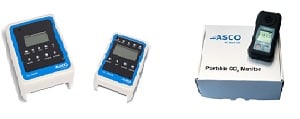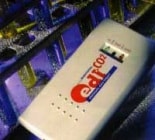Blast Cleaning Directory
Experienced Professionals ready to help you

SAFE HANDLING
OF DRY ICE
Dry Ice blasting safety is essential for all dry ice blasting companies.
Caution: Keep Dry Ice away from other people. You may be liable for any injuries. Keep the blast cleaning area well ventilated at all times.
NECESSARY VENTILATION
Normal air is 78% Nitrogen, 21% Oxygen, and only 0.035% Carbon Dioxide. If the concentration of carbon dioxide in the atmosphere rises above 0.5%, CO2can become dangerous.
Too much carbon dioxide
Small concentrations can cause quicker breathing, headaches, and sleepiness in some people but are otherwise not harmful. Danger! If dry ice has been left in a closed auto, van, room, or walk-in freezer for more than 15 minutes, open doors to allow adequate ventilation before entering. Exit all areas containing Dry Ice CO2 if you start to pant and breath quickly, develop a headache, or your fingernails or lips start to turn blue. These are signs that you have breathed in too much CO2 and not enough oxygen.
Carbon dioxide is heavier than air.
Carbon dioxide is heavier than air and will accumulate in low spaces. Do not enter closed storage areas that have stored Dry ice before airing out completely. Dry ice blast cleaning contractors must always keep in mind the risk of elevated carbon dioxide in the blast cleaning area – both for their safety and the safety of others in the area.
Always provide adequate ventilation.
Always provide additional ventilation for indoor projects and monitor yourself and others for shortness of breath and dizziness. A carbon dioxide monitor may be helpful.
Carbon Dioxide Monitor
HANDLING
Dry Ice temperature is frigid at -109F or -78°C. Always handle Dry Ice with care and wear protective gloves whenever handling it. It is harmless when touched briefly, but prolonged contact with the skin will freeze cells and cause injury similar to a burn. It may be best to wear a protective face covering for some work and, in confined spaces, wear a breathing apparatus supplying oxygen.
STORAGE
Store Dry Ice in an insulated container. The thicker the insulation, the slower it will sublimate. Do not store Dry Ice in a completely airtight container. The sublimation of Dry Ice to Carbon Dioxide gas will cause any airtight container to expand or possibly explode. Keep proper air ventilation wherever Dry Ice is stored. Do not store Dry Ice in unventilated areas. The sublimated Carbon Dioxide gas will sink to low areas and replace oxygenated air. Suffocation could occur with too high a concentration. There are Commercial Storage Containers available for better storage.
Bonar Plastics
PICK-UP TIME AND TRANSPORTING
Plan to pick up the Dry Ice as close to the time needed or have it delivered to your location on the day of blast cleaning. It sublimates at a rate of around 10% every 24 hours, depending upon the quality of insulation. If transported on a flatbed truck, make sure to protect it from rain, or you may look like a special effects vehicle with smoke-like fog pouring out behind you. One truck was stopped by the police when this happened.
BURN TREATMENT
Treat Dry Ice burns the same as heat burns. See a doctor if the skin blisters or comes off. Otherwise, if only red, it will heal simultaneously as a burn. Apply antibiotic ointment to prevent infection and bandage only if the damaged skin area needs to be protected.

TILED FLOORS OR COUNTERTOPS
Do not leave Dry Ice on the tiled countertop or floors as the extreme cold could crack it.
MSDS
Here are two Material Safety Data Sheet available online: Airgas https://www.airgas.com/msds/001091.pdf
Praxair www.praxair.com/-/media/corporate/praxairus/documents/sds/dry-ice/dry-ice-ultraice-co2-safety-data-sheet-sds-p4575.pdf
DISPOSAL
Unwrap and leave it at room temperature in a well-ventilated area. It will sublimate from a solid into a gas.
DO NOT leave Dry Ice unattended where children or others could take it. You may be liable for injuries.
You may add your Blast Cleaning services to this directory for new customer contacts.
Professional Companies Offering Assistance
OLIVO
BP 19 – 42230 Roche-la-Molière – France
Tél. +33 (0)4 77 90 68 63
https://www.olivo-logistics.com/ contact@olivo.eu



















